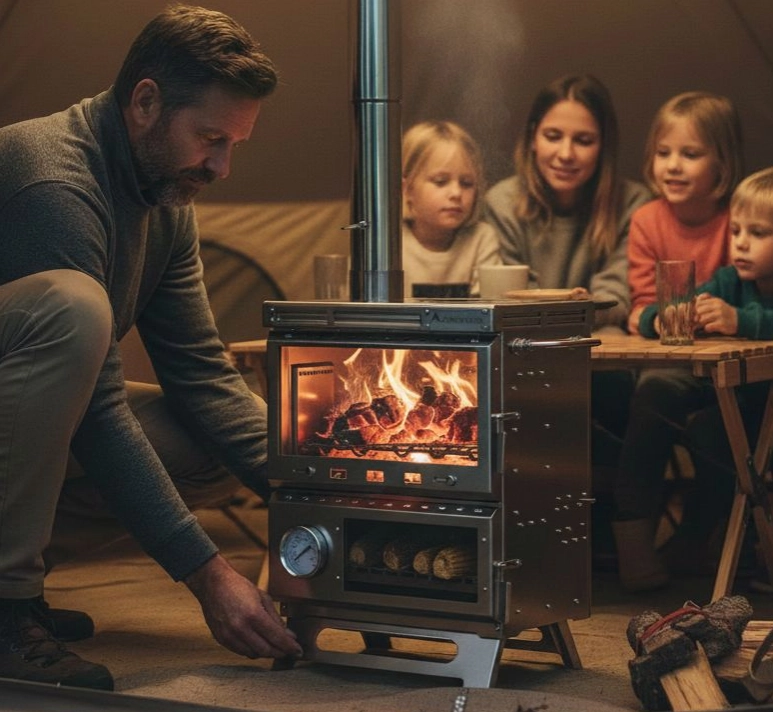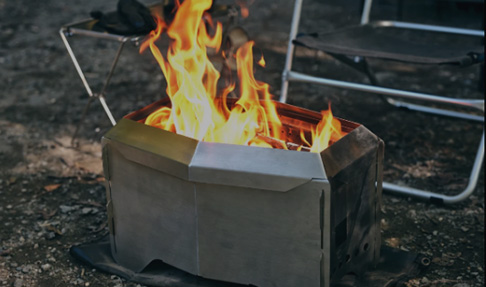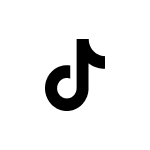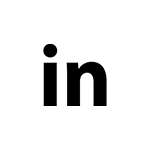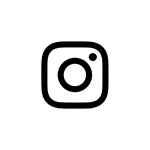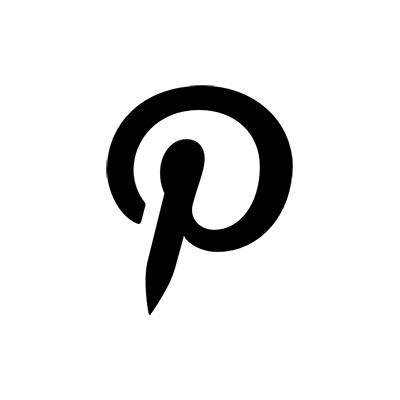Find out more about our news >
OEM/ODM Tent Stove Manufacturer in China: How INBESTCAMP Helps Brands Launch Custom Outdoor Stoves
If you are building an outdoor product line, the tent stove is a high-impact item: it directly affects user safety, comfort and brand reputation. Choosing an OEM/ODM partner who can deliver a market-ready tent stove from concept through certification and logistics is critical. This guide analyzes every layer — from the combustion chamber to the carton, from component tolerance to go-to-market positioning — and explains how Tuoshenghe supports brands with one-stop OEM/ODM tent stove solutions.
Executive summary — what this guide covers
Core product anatomy and functional trade-offs (pressurized vs. wick vs. catalytic)
Materials, coatings and life-cycle considerations for outdoor durability
Thermal performance metrics, fuel efficiency and emissions concerns
Safety engineering, mandatory tests and certification matrix by market
Manufacturing methodology: processes, tolerances, QC points and intelligent production benefits
Customization & differentiation levers for private labels and premium lines
Packaging, logistics, service & spare parts strategy
Commercial terms: cost drivers, MOQ, lead times, sample process, payment terms
Marketing & launch checklist: positioning, content, and distribution tips
Practical FAQ for procurement and product managers
INBESTCAMP leverages 15+ years of industry experience, vertical manufacturing, and intelligent production to manage all of the above for brands operating in 30+ countries.
1. Product anatomy — internal components and why they matter
A tent stove looks simple but is a system of interdependent parts. Quality and performance depend on how each part is specified and integrated.
Key sub-assemblies
1. Combustion chamber / burner head
Jet/nozzle geometry, air intake ports, and secondary air paths determine flame shape, soot formation and efficiency.
2. Fuel system
For wood designs: firebox, grate, ash pan and smoke management.
3. Heat exchange & flue
Chimney/stack dimensions, baffle design and turbulators impact draft, smoke evacuation and tent compatibility.
4. Controls and user interface
Valve accuracy, window design, and the layout of the ergonomic control devices.
5. Structural elements
Pot stand, trivet, foldable legs, and thermal shields. Stability and safety are here.
6. Seals and gaskets
Fuel-resistant elastomers (Viton), high-temp gaskets for smokestack joints.
7. Finish and corrosion protection
Powder coating, passivation or high-temp paints, stainless elements at wear points.
Why this breakdown matters: Each sub-assembly contains the primary failure modes — leaks, clogs, corrosion, poor draft, unstable pots — so addressing them in design and testing prevents product returns and safety incidents.
2. Combustion architectures & performance tradeoffs
Tent stoves fall into several classes. Your choice dictates engineering, cost and target market.
A. Wood-burning tent stoves
Pros: Fuel availability, aesthetic fire, simplicity.
Cons: Soot, higher particulate emissions, complex smoke management for tent use, heavier construction.
B. Pressurized liquid-fuel stoves (kerosene/diesel)
Pros: High heat output, efficient, good for cold climates.
Cons: Requires pump/valve precision, leak management, training for safe use.
C. Wick / lamp stoves (simpler liquid fuel)
Pros: Low cost, easy repair.
Cons: Lower efficiency, higher soot, not ideal for cold/windy.
D. Hybrid & multi-fuel options
Designs that accept small pellets, wood or liquid fuel with interchangeable burners increase market reach but add complexity.
Performance metrics to specify
Nominal heat output (kW / BTU) and usable cooking power.
Fuel consumption rate (ml/hr or g/hr).
Water boil test (1 L to boil time at nominal).
Cold-start reliability and sustained operation.
Emissions: CO (ppm), PM2.5, visible smoke amount — critical for tent/indoor usage.
Tuoshenghe advises brands on the right architecture based on usage scenarios (winter mountaineering vs. family glamping vs. emergency kits).

3. Materials, corrosion control and durability
Outdoor products face moisture, abrasion and temperature cycles. Material choices impact longevity, weight and cost.
Tank/body: 304 stainless steel for best corrosion resistance; 430 stainless or cold-rolled (CR) steel with quality powder coat for cost balance.
Burner & nozzle: Brass or stainless; brass is machinable to fine jet tolerances but can deform under extreme heat—stainless is higher cost but durable.
Flue/stack: Stainless is preferred for corrosion and high temp.
Seals: Viton for fuel contact points; silicone for higher temp ranges (where cost allows).
Fasteners: Grade A2/A4 stainless screws for external; plated steels for internal non-fuel wet zones if cost necessary.
Coatings: High-temp silicone paints, ceramic coatings for hotspots, powder coat for panels.
Testing to insist on: salt spray, humidity chamber, thermal cycling, and abrasion tests. Tuoshenghe maintains material traceability and can supply material certificates for audits.
4. Safety engineering & required testing (non-negotiable)
Safety drives market acceptance and reduces liability. Product managers must require rigorous tests and documented procedures.
Core safety features
Pressure relief valves (for pressurized tanks) and burst test ratings.
Leak-proof threaded connections and redundant sealing.
Stable pot supports and anti-tilt geometry.
Flame arrestors and spark suppression for wood stoves.
CO emission minimization strategies and clear user warnings.
Recommended testing matrix
Pressure endurance & burst testing (pressurized stoves).
Leak testing under pressure with dyed fuel.
Combustion/emissions (CO, NOx, PM) in controlled lab conditions.
Drop, vibration and transport simulation.
Long burn endurance tests at nominal and high settings.
Flue draft and backflow testing to ensure smoke does not reenter tent.
INBESTCAMP runs in-house functional tests and coordinates third-party labs for CE/UL and export requirements.
5. Manufacturing flow, tolerances and intelligent production
Tuoshenghe’s advantage is vertical integration and intelligent production systems — which lowers defects and shortens time to market.
Typical factory workflow
1. Raw material inspection & cut/press — laser cutting and stamping for panel parts.
2. CNC turning/milling — valves, nozzles, and precision components.
3. Brazing/welding & brazed burner assemblies — verified by QC.
4. Surface treatment — passivation for SS parts, powder coat for panels.
5. Assembly line with inline leak & burn testing.
6. Batch sampling for emissions and pressure verification.
7. Final packaging & palletization.
QC checkpoints
Incoming material certificates (MMR).
Dimensional checks (CMM, projectors) on valve spindles and nozzle orifices.
Weld X-ray or MPI on critical joints for higher spec lines.
100% functional bench tests for critical safety features.
Statistical process control (SPC) to maintain <1% defective rate.
Intelligent production benefits: automated welding and inline testing reduce human variability and provide traceable data for audits — a major selling point for international retailers.
6. Customization & differentiation options for brands
Brands can differentiate through both function and presentation.
Cosmetic & brand touches
Custom colors and enamel or textured finishes.
Laser or embossed logos, serial numbers, and limited edition engravings.
Branded carry cases, instruction manual designs and UPC/retail packaging.
Functional & performance customization
Fuel capacity variants, burner power tuning, dual-fuel options.
Integrated windshields, pot stabilizers, or stove-to-tent interface kits.
Accessory bundles: spark arrestors, ash pans, cleaning kits.
UX & value add
Piezo igniter, visual fuel gauges, quick-release legs, safety lockouts.
QR codes linking to safety videos, replacement parts or warranty registration.
INBESTCAMP supports design-for-manufacture optimization so brand features are feasible and costed correctly.
7. Certification, compliance & market readiness
Certifications depend on target markets:
EU: CE marking for product safety; specific EN standards for appliances and fuels may apply.
USA/Canada: UL/ANSI standards for heating/cooking appliances; lab testing for CO emissions if used in enclosed spaces.
Australia/NZ: SAA approvals and gas appliance regulations for gas variants.
Export documentation: RoHS for electronics, REACH considerations for finishes.
INBESTCAMP organizes pre-compliance tests and partners with accredited labs to secure necessary certificates — critical to clear customs and sell through reputable retail channels.
8. Packaging, spares & after-sales strategy
Packaging is both protective and a marketing touchpoint.
Packaging needs
Internal cushioning (molded pulp or die-cut foam) to protect valves and flues.
Strong outer cartons, moisture barriers and barcodes/labels for logistics.
Multilingual manuals with safety diagrams and maintenance steps.
Spare parts & service
Ready availability of nozzles, gaskets, seals and pump parts lowers returns.
Spare kits bundled with premium units reduce friction for end users.
Clear warranty processes and RMA flows reduce disputes.
Tuoshenghe offers warehousing and drop-ship solutions to support seasonal demand spikes.
9. Cost drivers, MOQ, lead times & commercial terms
Understanding cost levers helps align product specification with margin expectations.
Main cost drivers
Material grade (304 SS vs coated steel).
Precision machining (nozzle orifices, valves).
Safety components (pressure relief valves, certified seals).
Surface finish complexity and packaging design.
Certification & testing costs amortized into the first batches.
Typical commercial parameters (INBESTCAMP)
MOQ: flexible; small pilot runs possible (100–500) depending on design.
Sample lead time: typically 5–10 days for prototype; quick samples 48–72 hrs for small tweaks.
Mass production lead time: 15–30 days post sample approval depending on complexity and quantity.
Payment terms: common 30% T/T deposit, 70% before shipment (negotiable for long-term partners).
Price optimization: choose where to invest (durable materials vs premium UX features) based on target price point and channel (e-commerce vs specialty retail).
10. Go-to-market and launch checklist for brand teams
Before launch, make sure the following are completed:
Finalized functional spec and BOM with tolerances.
Material certificates and lab test records.
Prototype user testing and cold-weather validation.
Certifications required for each target market.
Packaging approved, product photography shot, and user manuals translated.
Spare parts plan and warranty policy defined.
Logistics and fulfillment plan (sea/air, DDP options).
Marketing assets: demo videos, safety tutorials, product datasheet.
INBESTCAMP provides project management support to run through each item and maintain timelines.
11. Marketing & differentiation ideas
Demonstration videos: cold-start in subzero, wind resistance and boil tests.
Safety and certification badges: prominently displayed in product pages.
Bundle offers: stove + maintenance kit + carry case = higher AOV.
Limited editions: branded colors or serial numbers for premium segments.
Channel segmentation: rugged, simple wick models for mass markets; high-performance pressurized models for premium/outdoor specialty stores.
12. Sustainability & lifecycle considerations
Sustainability topics increasingly influence buyer decisions.
Design for repair: replaceable jets, gaskets and pumps extend life.
Recyclable materials and minimal plastic packaging.
Fuel efficiency reduces overall environmental impact per use.
Clear end-of-life and spare parts availability messaging builds brand trust.
13. Practical FAQs for procurement & product teams
Q: Can you produce both wood and kerosene tent stoves on one production line?
A: Yes — with planning. Separate process steps and tests are required; tooling and QC differ.
Q: How are emissions tested?
A: Using controlled combustion chambers and analyzers for CO, CO₂ and particulate matter. Third-party labs provide standardized test reports.
Q: What warranties are typical?
A: 12–24 months depending on product class and region. Extended warranties can be offered with registered users.
Q: What after-sales support do you provide?
A: Spare parts inventory, maintenance kits, instruction videos and RMA handling for global clients.
14. Why partner with INBESTCAMP / Tuoshenghe
Tuoshenghe (INBESTCAMP) combines 15 years of focused expertise in outdoor cooking equipment with vertical manufacturing, R&D and global compliance support. The company’s intelligent manufacturing reduces defects, accelerates sampling, and supports flexible MOQs — ideal for brands launching tent stoves with differentiated features and reliable safety profiles.
Conclusion — full picture
Launching a tent stove brand successfully requires deep technical rigor, rigorous safety testing, production discipline and smart commercialization. INBESTCAMP provides a full OEM/ODM stack — design, prototyping, intelligent manufacturing, certification support, packaging and global logistics — enabling brands to deliver safe, durable and market-ready tent stoves that consumers trust.
If you want, INBESTCAMP can distill this into a procurement spec sheet, acceptance test checklist, or a market launch playbook tailored to your target regions. Contact info is at the end of this page.




 RELATED MAGAZINE
RELATED MAGAZINE 

